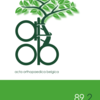Does in-brace correction affect coronal spinal and thoracic cage parameters in individuals with idiopathic scoliosis? A retrospective cohort study
braces, biomechanics, scoliosis, rib cage
Published online: Nov 05 2023
Abstract
The aim of the study is to identify the effects of in-brace correction on coronal spinal and thoracic cage parameters in individuals with idiopathic scoliosis (IS). The coronal spinal parameters [Cobb angle, apical vertebral rotation (AVR), lateral trunk shift, coronal alignment, biacromial slope and pelvic asymmetry] and the thoracic cage parameters [T1- 12 height, T1-S1 height, thoracic transverse diameter, and apical vertebral body-rib ratio (AVB-R)] of 89 child and adolescent patients were measured on posterior-anterior full-spine radiographs at pre-brace and in-brace conditions using Surgimap software. The initial in-brace correction (IBC) was calculated as a percentage decrease in the Cobb angle on the in-brace radiographs. The mean IBC rate for the primary curve was 37% (range = 10-100%). In the in- brace condition, the Cobb angle (p<0.001), AVR (p<0.001) and lateral trunk shift (p<0.001) decreased significantly; no statistically significant difference was found in the biacromial slope (p=0.713) and the coronal alignment (p=0.074). The T1-12 height and the T1-S1 height increased significantly (p<0.001) whereas the thoracic transverse diameter and the AVB-R decreased significantly (p<0.001). Unlike IBC rate was below 30% as IBC rate was above 30%, the T1-12 height (p<0.001) increased and the AVB-R decreased (p<0.001). The bracing improved the lateral trunk shift, the AVB-R, the thoracic and spine heights, but decreased the thoracic transverse diameter. The thoracic cage parameters may be better when the IBC rate is above 30%.
